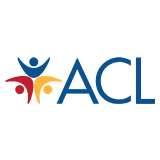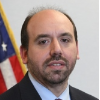The Administration on Aging (AoA) is responsible for home and community-based services and programs related to aging. It also focuses on helping empower Americans before and during their later years to make informed decisions about health care options; ensuring the rights of the elderly, to prevent their abuse, neglect and exploitation; and facilitating society to prepare for an aging population.
Although the AoA office was not established until 1965, U.S. government involvement in the specific concerns of the elderly began much earlier. In 1935 the Social Security Act provided for Old Age Assistance and Old Age Survivors Insurance. In 1950, President Truman held the first National Conference on Aging, and two years later the first federal funds for social service programs for the elderly were made available. In 1956 a Special Staff on Aging was established within the Office of the Secretary of Health, Education and Welfare, and a Federal Council on Aging was created by President Eisenhower. In 1961, the first White House Conference on Aging was held; in 1962 legislation was introduced in Congress to establish an independent and permanent Commission on Aging; and three years later AoA began. In 1965 Medicare and Medicaid were added to the Social Security Act, and in 1967 the Age Discrimination Act was signed into law. The Age Discrimination in Employment Act was established in 1990. Since then, an Older Americans Act Amendment was added to cover vulnerable elder American right activities, including neglect and exploitation and the role of local ombudsman programs. An additional amendment established a new National Family Caregiver Support Program.
AoA, funded by the Older Americans Act, is part of a federal, state, tribal and local partnership called the National Network on Aging, which currently helps about 7 million older people and their caregivers, via 29,000 service providers and thousands of volunteers. The work the network is divided into six core services:
- Supportive, which helps provide a wide variety of programs, including adult day care, chore services, financial and legal assistance, and transportation to medical appointments.
- Nutrition, which provides education and health screenings and counseling, along with hot meal delivery programs for the homebound, and meal services as well for additional at-risk older people, many of whom come together to receive the meals at senior settings or other group locations .
- Preventative health services, which educate about the benefits of regular screenings, positive lifestyle choices, and physical activities, to help prevent many chronic diseases. The guidance it offers also helps the elderly and their families make more informed choices with the goal to increase the length and quality of their lives.
- The National Family Caregiver Support Program, which was funded for the first time in 2000, gives those responsible for the primary care of spouses, parents, older relatives and friends’ assistance in accessing relevant services, and knowledge about available support groups, to help them make decisions, solve problems and also take care of themselves in the process. Additionally, the program addresses grandparents caring for grandkids and caregivers of those 18 and under who are mentally retarded or have developmental difficulties.
- Services that protect the rights of vulnerable older persons in the areas of abuse, neglect and exploitation, which includes programs that afford access to a long-term care ombudsman on-site at nursing homes, as an advocate to answer questions and investigate and resolve complaints; insurance and pension counseling; and Medicare patrol projects. AoA also awards grants to various groups across the country that carry out their mission, including States, territories, Hawaiian Americans, Native American tribes, and non-profit organizations.
- Service to Native Americans, which is targeted to the specific needs of both Native Americans and native Hawaiians.
- Table of Contents
- Overview
- History
- What it Does
- Where Does the Money Go
- Controversies
- Suggested Reforms
- Comments
- Leave a comment

On August 3, 2017, the U.S. Senate confirmed President Donald Trump’s nomination of Lance A. Robertson of Oklahoma to be the next chief of the Administration for Community Living, an office in the Department of Health and Human Services that is responsible for home and community-based services and programs related to aging. Since 2007, Robertson has been director of Aging Services at the Oklahoma Department of Human Services. He succeeds Kathy Greenlee in the new post, who had served since 2009.
Born March 16, 1971, Lance Allen Robertson was raised by his grandparents in Wellston, Oklahoma. After serving in the Army, Robertson earned a B.S. in Business at Oklahoma State University in 1993, where he was president of the Off Campus Student Association. He later earned a Master’s in Public Administration at the University of Central Oklahoma in 2015.
Just a year after graduating, Robertson co-founded the Gerontology Institute at Oklahoma State University, of which he was director from February 1994 to June 2005. He also served as executive director of PartnerShips for Aging, the largest regional gerontology association in the U.S. In addition, he was a self-employed aging services consultant and an unpaid “Vintage Visions” columnist for The Oklahoman during these years.
Robertson was hired by the Oklahoma Department of Human Services in February 2006, but did not become director of Aging Services until June 2007. As director, he is responsible for an annual budget of $325 million and a statewide workforce of 255, although Oklahoma’s programs for aging have seen recent budget and workforce cuts.
Robertson has served as the president of the National Association of States United for Aging & Disability (NASUAD), a leading authority on aging and disability. In 2008, Robertson drew on his own life experiences to write “Grandparents Raising Grandchildren,” which was included as a chapter of the book, Godly Grandparenting: A Christian Guide for Today’s Families.
Lance Robertson resides with his wife, Lori, and two daughters, Brooke and Kaitlyn, in Edmond, Oklahoma.
-Matt Bewig
To Learn More:
Edmond Man Nominated by Trump for National Position (by Eriech Tapia, The Oklahoman)
Adult Care in Oklahoma - The Social Service Workers (by Ron Jackson, The Oklahoman)
- Latest News
- D.C. Public Schools will Teach all Second-Graders to Ride a Bike
- New Rule in Germany Limits Sales of Sex-Themed E-Books to 10pm to 6am
- What Happened to the 6-Year-Old Tibetan Boy the Chinese Government Kidnapped 20 Years Ago?
- U.S. Ambassador to Turkey Photoshops his Hair Color to Mock Turkish Mayor
- Mystery Artist Calls Attention to Unfixed Potholes by Drawing Penises around Them
The Administration on Aging (AoA) is responsible for home and community-based services and programs related to aging. It also focuses on helping empower Americans before and during their later years to make informed decisions about health care options; ensuring the rights of the elderly, to prevent their abuse, neglect and exploitation; and facilitating society to prepare for an aging population.
Although the AoA office was not established until 1965, U.S. government involvement in the specific concerns of the elderly began much earlier. In 1935 the Social Security Act provided for Old Age Assistance and Old Age Survivors Insurance. In 1950, President Truman held the first National Conference on Aging, and two years later the first federal funds for social service programs for the elderly were made available. In 1956 a Special Staff on Aging was established within the Office of the Secretary of Health, Education and Welfare, and a Federal Council on Aging was created by President Eisenhower. In 1961, the first White House Conference on Aging was held; in 1962 legislation was introduced in Congress to establish an independent and permanent Commission on Aging; and three years later AoA began. In 1965 Medicare and Medicaid were added to the Social Security Act, and in 1967 the Age Discrimination Act was signed into law. The Age Discrimination in Employment Act was established in 1990. Since then, an Older Americans Act Amendment was added to cover vulnerable elder American right activities, including neglect and exploitation and the role of local ombudsman programs. An additional amendment established a new National Family Caregiver Support Program.
AoA, funded by the Older Americans Act, is part of a federal, state, tribal and local partnership called the National Network on Aging, which currently helps about 7 million older people and their caregivers, via 29,000 service providers and thousands of volunteers. The work the network is divided into six core services:
- Supportive, which helps provide a wide variety of programs, including adult day care, chore services, financial and legal assistance, and transportation to medical appointments.
- Nutrition, which provides education and health screenings and counseling, along with hot meal delivery programs for the homebound, and meal services as well for additional at-risk older people, many of whom come together to receive the meals at senior settings or other group locations .
- Preventative health services, which educate about the benefits of regular screenings, positive lifestyle choices, and physical activities, to help prevent many chronic diseases. The guidance it offers also helps the elderly and their families make more informed choices with the goal to increase the length and quality of their lives.
- The National Family Caregiver Support Program, which was funded for the first time in 2000, gives those responsible for the primary care of spouses, parents, older relatives and friends’ assistance in accessing relevant services, and knowledge about available support groups, to help them make decisions, solve problems and also take care of themselves in the process. Additionally, the program addresses grandparents caring for grandkids and caregivers of those 18 and under who are mentally retarded or have developmental difficulties.
- Services that protect the rights of vulnerable older persons in the areas of abuse, neglect and exploitation, which includes programs that afford access to a long-term care ombudsman on-site at nursing homes, as an advocate to answer questions and investigate and resolve complaints; insurance and pension counseling; and Medicare patrol projects. AoA also awards grants to various groups across the country that carry out their mission, including States, territories, Hawaiian Americans, Native American tribes, and non-profit organizations.
- Service to Native Americans, which is targeted to the specific needs of both Native Americans and native Hawaiians.
Comments
moreless
On August 3, 2017, the U.S. Senate confirmed President Donald Trump’s nomination of Lance A. Robertson of Oklahoma to be the next chief of the Administration for Community Living, an office in the Department of Health and Human Services that is responsible for home and community-based services and programs related to aging. Since 2007, Robertson has been director of Aging Services at the Oklahoma Department of Human Services. He succeeds Kathy Greenlee in the new post, who had served since 2009.
Born March 16, 1971, Lance Allen Robertson was raised by his grandparents in Wellston, Oklahoma. After serving in the Army, Robertson earned a B.S. in Business at Oklahoma State University in 1993, where he was president of the Off Campus Student Association. He later earned a Master’s in Public Administration at the University of Central Oklahoma in 2015.
Just a year after graduating, Robertson co-founded the Gerontology Institute at Oklahoma State University, of which he was director from February 1994 to June 2005. He also served as executive director of PartnerShips for Aging, the largest regional gerontology association in the U.S. In addition, he was a self-employed aging services consultant and an unpaid “Vintage Visions” columnist for The Oklahoman during these years.
Robertson was hired by the Oklahoma Department of Human Services in February 2006, but did not become director of Aging Services until June 2007. As director, he is responsible for an annual budget of $325 million and a statewide workforce of 255, although Oklahoma’s programs for aging have seen recent budget and workforce cuts.
Robertson has served as the president of the National Association of States United for Aging & Disability (NASUAD), a leading authority on aging and disability. In 2008, Robertson drew on his own life experiences to write “Grandparents Raising Grandchildren,” which was included as a chapter of the book, Godly Grandparenting: A Christian Guide for Today’s Families.
Lance Robertson resides with his wife, Lori, and two daughters, Brooke and Kaitlyn, in Edmond, Oklahoma.
-Matt Bewig
To Learn More:
Edmond Man Nominated by Trump for National Position (by Eriech Tapia, The Oklahoman)
Adult Care in Oklahoma - The Social Service Workers (by Ron Jackson, The Oklahoman)
- Latest News
- D.C. Public Schools will Teach all Second-Graders to Ride a Bike
- New Rule in Germany Limits Sales of Sex-Themed E-Books to 10pm to 6am
- What Happened to the 6-Year-Old Tibetan Boy the Chinese Government Kidnapped 20 Years Ago?
- U.S. Ambassador to Turkey Photoshops his Hair Color to Mock Turkish Mayor
- Mystery Artist Calls Attention to Unfixed Potholes by Drawing Penises around Them






Comments
moreless